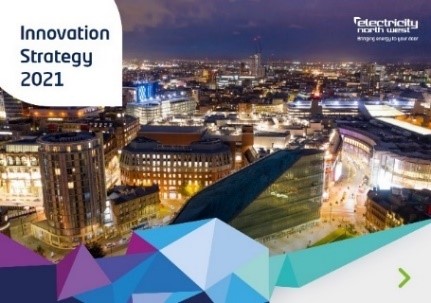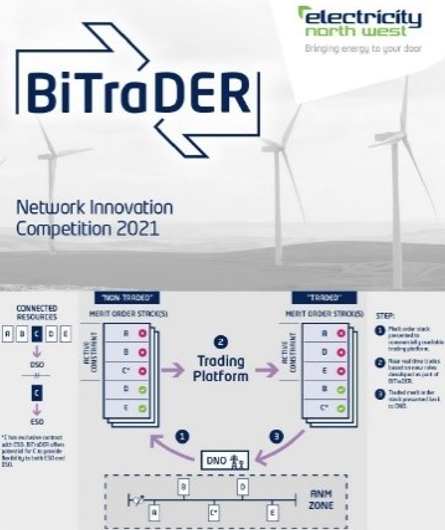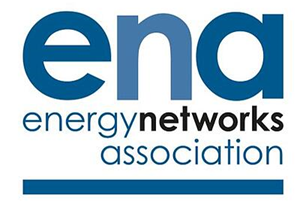Innovation update, November 2021
Innovation update November 2021
In this issue we introduce our new innovation strategy, announce Ofgem’s decision on our submissions to the 2021 NIC, share the latest developments in our key innovation projects, and introduce our new NIA projects.
Introducing our new innovation strategy

We recently refreshed our Innovation Strategy to ensure it captures the latest challenges we face, our approach to using innovation to address these challenges, and the principles and themes that will guide our thinking. The new strategy will feed into our RIIO-ED2 business plan, and is designed to support our wider business goals by incorporating elements of our existing strategies, such as the DSO Strategy, Leading the North West to Zero Carbon, and the Community and Local Energy Strategy.
We have now published our new innovation strategy on our website, and you can find it here.
If you have any comments on our strategy or what you would like us to focus on in the future, please let us know by filling out the feedback survey linked in the document or by emailing us at innovation@enwl.co.uk.
Network Innovation Competition 2021

This year we submitted two exciting and highly innovative projects to Ofgem’s Network Innovation Competition (NIC). Building on the success of past projects such as CLASS and Smart Street, this year we asked Ofgem for over £12m in additional funds for projects Smarter Heat and BiTraDER.
On 31 November Ofgem announced its decision to award our full funding request for BiTraDER only.
BiTraDER will investigate and trial the introduction of a bilateral trading market using a platform through which flexible service providers can trade their position in the merit order stack, which determines the order in which generators will be asked to curtail their output at times of high demand on the network, adding value to the flexibility market. This £8.4m project will run from May 2022 to July 2026, and we will work closely with project partners Electron, AFRY Management Consulting and Delta-EE during delivery.
The NIC is a funding mechanism which encourages Network Licensees to innovate to address issues associated with the move to a low carbon economy and deliver wider environmental benefits to customers. Last year we won £7.95m in funding for our QUEST project.
Ofgem confirmed that it will not fund our application for Smarter Heat, and has asked us to consider a smaller, Network Innovation Allowance project instead, after recognising the challenge and the value in certain elements of the proposed work.
QUEST project underway
 In November 2020 Ofgem announced its decision to approve our full funding request of £7.95 million for QUEST, our latest NIC project. This was a great result for us, and we are now working alongside project partners Schneider Electric, Smarter Grid Solutions, Fundamentals Ltd, Impact Research and National Grid ESO to deliver the project within the next 4 years.
In November 2020 Ofgem announced its decision to approve our full funding request of £7.95 million for QUEST, our latest NIC project. This was a great result for us, and we are now working alongside project partners Schneider Electric, Smarter Grid Solutions, Fundamentals Ltd, Impact Research and National Grid ESO to deliver the project within the next 4 years.
QUEST will use proven technology combined with innovative software in our network management system to create an overarching control system that co-ordinates existing voltage management techniques, such as CLASS, Smart Street and ANM. It will boost the benefits of these existing techniques, facilitate the increased connection and use of low carbon technologies, and maximise benefits to customers through energy reduction.
The project is off to a strong start – we have completed and published the first project deliverable, the Initial Report on Use Cases, which is now available on our website alongside our customer engagement plan, and have started work on our next deliverable, the Design Specification and Architecture Lessons Learned report, which is due in December 2021. If you are interested in learning more, you can find a copy of our recent ENIC presentation on our website.
Progress on Smart Street

After being granted an £18 million adjustment to our allowance in late 2019, we have now begun our rollout of the Smart Street system to 180 substations across the North West, bringing benefits to approximately 45,000 customers. We selected all 180 sites by the end of October 2021, increasing the actual number of benefiting customers to over 50,000. Construction designs are complete for the majority of these sites and the installation of our new OLTC equipped transformers has been completed at over 100 sites.
Smart Street uses innovative voltage control techniques to enable our network and customers’ appliances to perform more efficiently, delivering significant financial and environmental benefits for customers. Smart Street will reduce energy consumption by 5-8%, reducing energy bills by up to £60 per annum. We have calculated that in the longer term this limited rollout will save a massive 143,860 tonnes of carbon between now and 2050, which equates to removing 2,570 cars from our roads every year.
Our project website is now live – here you will find the latest project updates and background information on Smart Street and the IRM, in addition to project documents and videos.
We presented on our progress so far at this year’s virtual ENIC and filmed a short video on the project, which was made available for download on our virtual stand and can be found here. Soon, we will also release a brand new animated video to explain Smart Street and the IRM.
We have also been working on our plans for a wider rollout of Smart Street in RIIO-ED2 as a business-as-usual solution. As part of this rollout, we plan to install the Smart Street system at around 1000 substations, bringing benefits to approximately 250,000 customers, of which we estimate that 12-16% (30,000-40,000) will be living in fuel poverty.
New NIA projects

In recent months we have registered several new Network Innovation Allowance (NIA) projects on ENA’s Smarter Networks Portal. NIA projects are small-scale innovation projects funded by Ofgem.
We have outlined the focus of these projects below, and you can find further details, including project registration documents, progress reports and factsheets, on our website. These projects are all in their early stages, some with contract negotiations ongoing and others with kick-off meetings and initial workshops planned.
- Smart Heat – April 2021-April 2022: Smart Heat will take a look at the impact of heat on our network, drawing on analysis of WPD’s Peak Heat project combined with learning from our Celsius and Smart Street projects to assess how smart network management can maximise existing network capacity by using variable thermal ratings, voltage control and demand flexibility.
- Online Neutral Assessment – April 2021-March 2023: a broken neutral on an LV cable can lead to a severe rise in voltage at a customer’s property, potentially damaging their wiring and appliances, cannot be detected by traditional LV protection equipment, and can be time consuming and disruptive to repair. Online Neutral Assessment will develop a tool that DNOs can use to analyse LV monitoring data to enable the early detection of neutral degradation on the LV network.
- Enhanced LFDD – June 2021-January 2023: due to the increasing prevalence of generation connected to our network, our traditional load shedding method is no longer suitable, and in fact could be counterproductive. Enhanced LFDD aims to develop an intelligent way to shed load in the case of low frequency at the Primary Supply Point using SuperTAPP relays deployed during the CLASS rollout.
- LV Predict – July 2021-January 2023: as the energy system evolves to meet net zero targets we will see an increase in demand and impact on LV cables. This increase in demand is expected to result in an increase in degradation rate of cables, eventually leading to higher failure rates. LV Predict will identify and test novel methodologies that could contribute to enhanced asset management for LV network assets by introducing predictive methods based on models to determine probability of asset failure.
- Statistical model for cut out failures – timeline tbc: Across the UK, DNOs are faced with an ageing population of cut outs in customer premises. These are no longer routinely observed by trained personnel, so tend to be replaced only upon failure. This project will carry out a combination of literature review and data analysis around modes of cut out failure, in addition to lab analysis of failed units to understand how these failure modes manifest. The aim is to generate a condition assessment model to allow targeted replacement of cut outs in a controlled manner.
- Hyperspectral imaging for waste classification – timeline tbc: under Environment Agency’s RPS 211, excavated waste from unplanned utilities work can be classified as non-hazardous if no prior assessment has been made. In June 2022 RPS 211 will be withdrawn, meaning that all such waste must be assessed and classified. This project will explore the potential for use of hyperspectral imaging technologies to inspect excavated waste on site and accurately classify it to reduce the associated disposal costs.
Annual innovation conference

The innovation team recently attended the Energy Networks Innovation Conference (ENIC), an annual knowledge dissemination conference managed by Energy Networks Association, offering a platform for network operators to discuss and share learning from regulator-funded projects. We presented at sessions on LFDD, Interface and QUEST, and hosted virtual rooms to discuss the Smart Street rollout and our plans for innovation in RIIO-ED2. We also manned our virtual stand, which stakeholders could use to ask us questions via the chat function or video call, and where factsheets and videos on all our live projects were available for download.
We also attended a range of sessions on various aspects of the energy industry, including asset performance/optimisation, digitalisation in whole energy systems, green transportation and customer vulnerability, amongst many others.
Useful links
- Our innovation strategy
- Our NIC project QUEST
- Our Smart Street IRM project
- Our NIA Projects
- Meet the Electricity North West innovation team
Or contact us at innovation@enwl.co.uk.